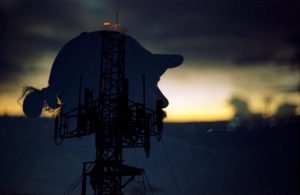Starlink: The Revolutionary Satellite Constellation Changing the Face of Global Connectivity

Introduction to Starlink
Starlink is the focus keyword for this article, and as such, it is essential to understand what Starlink is and how it works. Starlink is a satellite constellation developed by SpaceX, an American aerospace manufacturer and space transport services company founded by Elon Musk. The primary goal of Starlink is to provide high-speed, low-latency internet connectivity to remote and underserved areas around the world. With its innovative technology and ambitious goals, Starlink is poised to revolutionize the way we access the internet.
How Starlink Works
Starlink uses a constellation of low-Earth orbit (LEO) satellites to provide internet connectivity. The satellites are launched into orbit around the Earth, where they can communicate with ground stations and user terminals. The user terminals, which are small, compact devices, can be installed at homes, schools, or other locations, allowing users to access the internet. The satellites use advanced beamforming and phased array technologies to transmit and receive data, providing high-speed and low-latency connectivity.
Benefits of Starlink
Starlink offers several benefits over traditional internet service providers, including faster speeds, lower latency, and greater reliability. The satellites can also provide connectivity to remote and underserved areas, where traditional internet infrastructure may not be available. Additionally, Starlink can provide backup connectivity during outages or natural disasters, ensuring that critical communications remain available.
Applications of Starlink
Starlink has a wide range of applications, from consumer internet services to enterprise and government solutions. The constellation can provide connectivity for remote communities, emergency responders, and military personnel. It can also enable IoT (Internet of Things) applications, such as smart farming, smart cities, and industrial automation. Furthermore, Starlink can provide backup connectivity for critical infrastructure, such as hospitals, financial institutions, and emergency services.
Challenges and Limitations
Despite its many benefits, Starlink also faces several challenges and limitations. The constellation requires a large number of satellites to provide global coverage, which can be expensive and complex to launch and maintain. Additionally, the satellites must be designed to withstand the harsh conditions of space, including radiation and extreme temperatures. Moreover, Starlink must comply with regulatory requirements and obtain necessary licenses to operate in different countries and regions.
Conclusion
In conclusion, Starlink is a revolutionary satellite constellation that has the potential to change the face of global connectivity. With its innovative technology and ambitious goals, Starlink can provide high-speed, low-latency internet connectivity to remote and underserved areas around the world. While it faces several challenges and limitations, the benefits of Starlink make it an exciting and promising development in the field of satellite communications.



